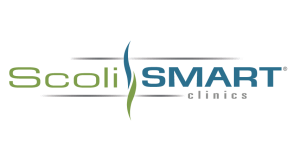Scoliosis is a highly complex disorder once thought to be primarily isolated to the spine. The characteristic curvature of the spine, known as the scoliosis, is diagnosed when the curvature exceeds a 10 degree Cobb angle measurement. Over the last decade, many researchers have documented various neurological and hormonal pathways that are associated with scoliosis, either in a causative manner or in a progressive one. While these dysfunctional pathways have been well illustrated, clinicians are rarely seem to be attempting to translate these findings into their scoliosis treatment.
Despite this abundance of new information on the causes and progression risks associated with scoliosis, clinicians are still trying to find a better way to treat the problem. This leads to a specific problem. By ignoring these associated risk factors, no treatment has a chance of providing a lasting scoliosis correction. It is well documented that even in cases where a patient’s spine is surgically fused, the scoliosis still gets worse over time. No wonder! The impetus for it to develop in the first place wasn’t addressed. My colleagues and I published a study in 2014 showing that if specific neurotransmitter imbalances that are associated with scoliosis are corrected, their treatment results were far more likely to last than if they did not address these underlying imbalances.
Treatment methods not often addressing these underlying causes. They’re not trying to be flexible in their patient treatment. For example, Schroth has become very popular in North America in the last 6-8 years. However, it is a therapy that has been around since the 1920’s. I am not singling out Schroth itself, I only mean to say that there are few practitioners out there who try to combine therapeutic approaches based upon what the patient needs, what the patient’s goals are, and what the physician’s goals and experience are. When providers become rigid in their thinking, patients suffer. We have to constantly search for a better way of doing things, even in scoliosis treatment. We can’t be stuck in the 1920s anymore. There is so much knowledge available about scoliosis that is not being utilized by most physicians and therapists.
Patients with scoliosis need a quarterback……..a clinician who can put together a team of experts or combination of therapies on behalf of the patient so that they get the most appropriate care available. If a child needs exercise therapy, they should get that. If they need a combined approach of exercises plus bracing, they should get that too. If the child is likely to need a surgical scoliosis treatment like vertebral body tethering (VBT), then the quarterback should be able to coordinate that care. Most providers are firmly on one side of the aisle or the other. Rarely are they in favor of both treatments.
If nothing else, what I am most proud of as a founding ScoliSMART Clinic location, is that we are unafraid to refer for treatments that we do not provide ourselves. They are scoliosis treatments the patient may need at that moment. That way, every patient who enters a ScoliSMART Clinic may have the piece of mind knowing that we will always do whatever it takes to help, even if that help comes from outside of our office.




